Settimo Martinello
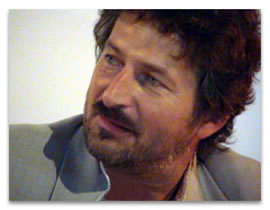
Settimo Martinello was born on 5 April 1954 in Bressanone, a tourist village 30 km north of Bolzano, the seventh of eight children: Tarcisio, Clara, Lino, Rita, Gabriella, Bruno, Settimo, Gianni. His father, Mario Martinello, was a security guard in a military ammunition depot and his mother, Bruna Montin, was a housewife. The family moved from Vipiteno to Bolzano in 1964.
His studies, after compulsory schooling, were a little unusual. He began by attending a three-year course at the Istituto Tecnico Industriale Galileo Galilei in Bolzano to become a skilled factory worker. Upon completion he found a job as a turner at Landeck in Austria, but soon realised that was not the path for him.
A few days before the entrance exam for the fourth year of the Industrial Technical Institute he quit and, overnight, with a Ducati Racing motorcycle, he rushed to Bolzano where together with his friend, Claudio Paterno, he prepared for and took the entrance exam.
In those years he tried not to burden the family budget too much, getting by with various jobs. He worked as a carpenter in the summer of his 14th year. The first money he earned went on a magnificent trumpet, the instrument of his dreams, which he soon had to set aside due to the repeated and vigorous protests of his neighbours. He worked as a plumber during the summers from 15 to 17 years of age, with the Mussak company helping to put up tents during the summer on campsites in the French Riviera, as an asphalter with the company Piccoli, and as a mini golf fitter in numerous Italian and foreign hotels.
In all this wandering he assimilated different ways of life, discovered the richness and poverty of feelings, the variety of people.
After graduation he enrolled at the University of Padua, where he studied engineering with a specialisation in mechanics. He soon stood out for the pace at which he passed exams, apart from drawing, which would haunt him until the fifth year preventing him from actually getting his degree with a mark of 110/110.
After passing all the first year exams he spent a working holiday in Canada, as a guest of his new employer and cousin Settimo Soligo. With him he worked as a plumber for three months, a hard job where the "newbies" are mainly assigned to the pick and shovel. The Canadian experience and the fruitful friendship with his namesake Settimo refreshed him. In his spare time he travelled the parks in a canoe and learned, by losing bets with his cousin, how to play golf, a sport that together with tennis, he would love for years to come.
Over long walks and chats with his cousin he built his own philosophy of life, based on simple things and the frankness of human relations.
He returned to Italy to start the second year which he faced head on, again passing all the scheduled exams by June.
In 1977, at the height of his university studies, he decided to fulfil his duty to the homeland. So he left in September 1977 for Cuneo to perform military service as a recruit in the Alpine Corps. He was not very satisfied with it and wasn't able to study as he had hoped. In April 1978, he was discharged for an alleged ulcer diagnosed by a fictional X-ray.
He then restarted his exam, which he passed so brilliantly that he received a round of applause from fellow students upon entering the classroom after achieving a fabulous 30 in the Technical Physics exam.
He did his thesis at the CNR (National Research Centre) in Padua: an experimental work entitled "analysis of regulation problems in solar installations for environmental air conditioning". It was his first approach to experimentation, and he was fascinated by it. He spent whole nights sleeping in a sleeping bag waiting for the results of computer processing: this was 1978-79 and computer processing was still very slow.
He received his bachelor's degree on 11 April 1979, with the magnificent mark of 108/110 in Mechanical Engineering. In reality he tried right to the last to get 110/110, but after refusing twice to accept a mark of 21 in the last exam, he had to settle for a 23.
This story is worth going into in greater detail. You will remember the only exam he did not pass in the first year: drawing. Things actually went worse than that. After a first wrong answer deemed sufficient to make a judgement, the examiner dismissed him. Martinello refused to get out of the chair and had to be physically carried away by orderlies while still sitting in the chair, with a stern face and folded arms. It was a pity that the examiner was also the lecturer in "machinery", an examination of the fifth year.
So after five years revenge was served. After performing excellently in the examination, he achieved the mark of 21 which, of course, could not be appealed. He did not accept the mark and tried again after a month, getting 21 again. He rejected the mark again and tried again after two months getting a 23, which he accepted, cursing the relevant person and adding another name to his personal list of people to avoid in order to live a peaceful life.
Thus began his adventure in the real world. He accepted a quarterly assignment to the CNR to continue his research, but soon realised that it was not for him. Il lavoro è troppo limitato, manca di stimoli.
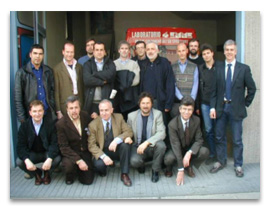
He then agreed to design a harvesting machine for the Harvest company. The project was aimed at obtaining a machine that automatically picked grapes. Fifteen of the first prototypes were sold in Veneto, a tough undertaking. The machine did its job, and did it well, but it required a lot of assistance. In the following two years, the prototypes were converted into a truly functional machine, of which more than 100 units were sold in 1981. Despite his technical success, his relationship with the Board of Directors was not on course. Two different policies and mentalities. Too much of a constraint for his mounting exuberance. He resigned, and with the proceeds of the project rights he founded, together with his brother Gianni, whom he brought into the adventure, a research and technological development company for industrial machinery: 4 Emme S.r.l.
These were tough years; he was still not clear on what he wanted to do. He had many great ideas but no financial backers. He then developed a patent, the GS Tester, a device capable of carrying out load tests using concentrated forces with electronic measurement of the deformations. For the time this was a real revolution. There were many sceptics and no buyers. But he kept on, and personally developed the first prototype at the Finardi workshop in Bolzano. Then, after a postal promotional campaign, he finally got the first order from the engineer F. Giuliani and the engineer M. Agnusdei of the Giepi laboratory in Foggia.
This was a starting point and provided encouragement. That first cheque for 6 million lira refreshed his spirit after a year of hard work.
In short, customers began to arrive: the engineer A. Formato from Benevento, the engineer Angelini from Pescara, the surveyor Davide Sala from Napoli, the engineer E. Agneloni from Perugia and many others. He sold his machines to them, taught them to use them and passed on the first foundations of the theory of load testing with forces. Many of these people became entrepreneurs by founding companies that today successfully operate in the field of non-destructive testing.
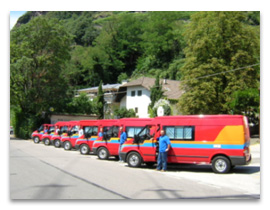
Meanwhile, using the same manufactured equipment, a service activity aimed at professionals began. The company developed rapidly with offices in Milan, Verona, Bologna, Padua, Rome, Palermo, Genoa, Turin, Cagliari, etc. and, gradually, in all the largest Italian cities, soon becoming the industry leader in non-destructive testing. Within the group, a research and development team was formed that allowed the types of surveys to expand, developing new techniques and equipment. The company grew stronger and by 1988 was already made up of more than 50 technicians. They operated in all fields of surveys: on materials such as concrete, steel, masonry, wood, and in the fields of dynamic testing, monitoring, etc.
That same year he decided to form a limited company and, while maintaining stock control, formed a strong group of shareholders: in addition to his brother Gianni who had been with him since the start, Luciano Ceschel and Giuliano Brusa - directors of the Milan office, Paolo Minelli - director of the Bologna office, Walter Venesia - administrative director. Friends more than shareholders. The company thus assumed a managerial footprint while maintaining, however, a consolidated reputation as professionals The company was able to count on highly specialised and loyal staff, well-known names in the sector and whose talents Martinello put to good use.
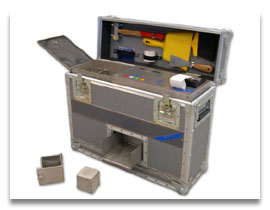
1990 to 2000 were intense, difficult years because of the construction crisis following the "Mani Pulite" corruption investigation. But "4 Emme Service S. p.a.", managed firmly by Martinello, had the advantage of having new ideas and solutions in reserve that allowed it to overcome this difficult period and to look to the future with confidence.
Many of the engineer's patents came from those years, some of which quickly achieved commercial success. The Speedymet, a piece of construction equipment which can predict the resistance of concrete at 28 days in just a few hours.
The Method of Tangents, which is an innovative solution that allows, through the use of slope sensors, identification in real time of the deformation of structures, in particular bridges, using sensors placed above the structure. The Sismic, a device that allows the application of impulse forces on-site to simulate the dynamic effects of loads.

But Martinello's inventive vein was not limited to the construction industry. In 1991 he developed the Telealarm, a kind of black box that, mounted on a car, automatically transmits information concerning accidents with oncoming cars. But it was too early on, the concept of road safety would develop over the following decade with the requirement to wear seatbelts, air-bags etc. becoming obligatory, so car manufacturers, while complimentary, did not invest in the implementation of the project, which would have avoided thousands of accidents. A seemingly impossible project, which still today has not been implemented.
Again in the automotive field, he invented the Dreamalarm, a tool to stop lorry drivers nodding off, something which causes hundreds of deaths each year in addition to extensive damage. The instrument consists of an intelligent eye, placed on the axle of the wheel, which recognises the presence of white (or yellow) road markings and recognises when the wheel goes over them. The information becomes an audible alarm in the cabin, waking the driver and saving his skin. This time he decided to manufacture it directly without building a commercial network. A bit like a hobby. Today the Dreamalarm can be purchased via the internet with a mounting kit.
These were also intense years from a personal point of view. He married Marjetica Brecelj in 1980, with whom he shared his entire entrepreneurial adventure, and had a beautiful daughter, Nevenka, born on 14 January 1985. These two firm points provided the driving force and inner tranquillity that allowed the young engineer to develop his inventiveness. The image of Nevenka became a recurrent theme on the covers of all the technical publications of those years. Even "On-site Testing", a small manual on non-destructive investigations, published in a recent edition, has an oriental-style image on the cover with eyes that, in my opinion, are Nevenka's.

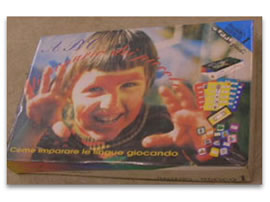

From playing with his daughter he developed and produced the ABC Children's Dictionary, a method and fun object for learning the first words in foreign languages through play. As a medium he used figurines, songs, puzzles, a fun set of games that fascinates children.
Then he invented and produced the Poperpepe, a kind of children's chess game, in which the chessboard is the jungle with its obstacles and the players are divided between animals on one side, and hunters on the other. The purpose is to cross the jungle unscathed using the characteristics of individual animals, the hippopotamus goes through the lake, the monkey uses vines, the lion makes the hunter run away, etc. In short, a nice game where you have to use the forces of nature itself to win. These products too, having served their inventive purpose, are limited to being sold only via the internet, as the objective was to invent and not to sell.
In 1992 he founded the International Centre for Experimental and Scientific Updating (CIAS), which prestigious names from the Italian and European academic worlds would join: Prof. E. Giangreco, Prof. P. Pozzati, Prof. T. Tassios, Prof. G. Creazza, Prof. A. Migliacci, Prof. B. Schrefler, Prof. E. Siviero, Prof. A. Di Tommaso, Prof. L. Jurina.
With this organisation he promoted knowledge, in the professional world, of survey techniques on materials and structures. He has organised dozens of national seminars on the subject of diagnosis, and three-yearly conferences lasting a week that take place in different European locations: Malta, Corinth, Dubrovnik, etc. and, in 2004, on a Mediterranean cruise. In 2000, together with a pool of professors and experts in the field of bridges, he published the "Manual for the Assessment of the State of Degradation of Bridges". The manual finally established a scientific methodology for the execution of Audit and Inspection through a rational procedure that enables numerical identification of the state of degradation to be obtained. On the basis of the manual, which quickly earned the success it deserved from its first edition in 2002, he directed the company's analysts in the construction of a software programme dedicated to the management of structures based on the needs of public authorities. A practical tool which soon conquered the market and was adopted by dozens of public authorities. During this phase the inventor also became a pioneer, solving the problem of abnormal loads through a scientific method - still top-secret - that allows the feasibility of any load passing over a bridge to be calculated automatically on the basis of a small amount of technical information.
His work and renown as an expert, acquired over twenty years of challenges, made him known in many foreign countries. SHe was then called to California to study the harmful effects of a amusement ride mounted on top of a building, to Somalia to analyse the structures of the embassy, to Libya to inspect the condition of stadia, to Berlin to analyse the hydrogen compressor in a blast furnace, to Madrid to analyse the rides for a new amusement park under construction, to Moscow to analyse the condition of the Lermontov buildings, and wandering in this way he continued to learn and have fun.

In 2002 the construction of the new headquarters in Bolzano began, a modern and functional structure that denotes the mankind’s typical spirit of adventure. In fact, a bridge physically unites the two structures where the offices and laboratories are located. A bridge symbolising a continued willingness to move forward.
In the new headquarters, inaugurated in 2003, he put together a pool of engineers that he called "my special team", which together with the other experienced and reliable teams formed throughout Italy, today represents an entity envied around the world and appreciated by thousands of professionals.

Professional life intimately connected with private life. Do you work when you have fun, or do you have fun when you work? His mother, a sprightly 101-year-old, follows him fondly and encourages him like a bird taking its first flight. In 2004, the Martinello family adopted a Belarusian girl, Ljuba, born in Minsk on 3 February 1989. An instinct and a further commitment that he shares with his life partner Marjetica. With them he often retreats to the Istrian village of Rovigno, and from the terrace of a pink house overlooking the sea seeks inspiration while gazing at the horizon. These are necessary escapes, to re-oxygenate, on a sailboat named....... "Pensaci Tu" (you take care of it)
RECENT PATENTS:
NEW PROJECTS:
ARTICLES:
- Numerical assessment of degradation
- From numerical assessment of the state of degradation of bridges to testing
- Automatic calculation of abnormal loads
- Surveys as a tool for assessing the resistant capability of structures
- CASE method
- Assessment of the bearing capacity of an arch bridge
- Experimental evaluation of the dynamic behaviour of a building for the purpose of seismic verification
- Abnormal loads - automated transit assessment
- Specifications tests on-site
NEVENKA MARTINELLO:
- Rakunroll - production of ceramics using the Raku technique






